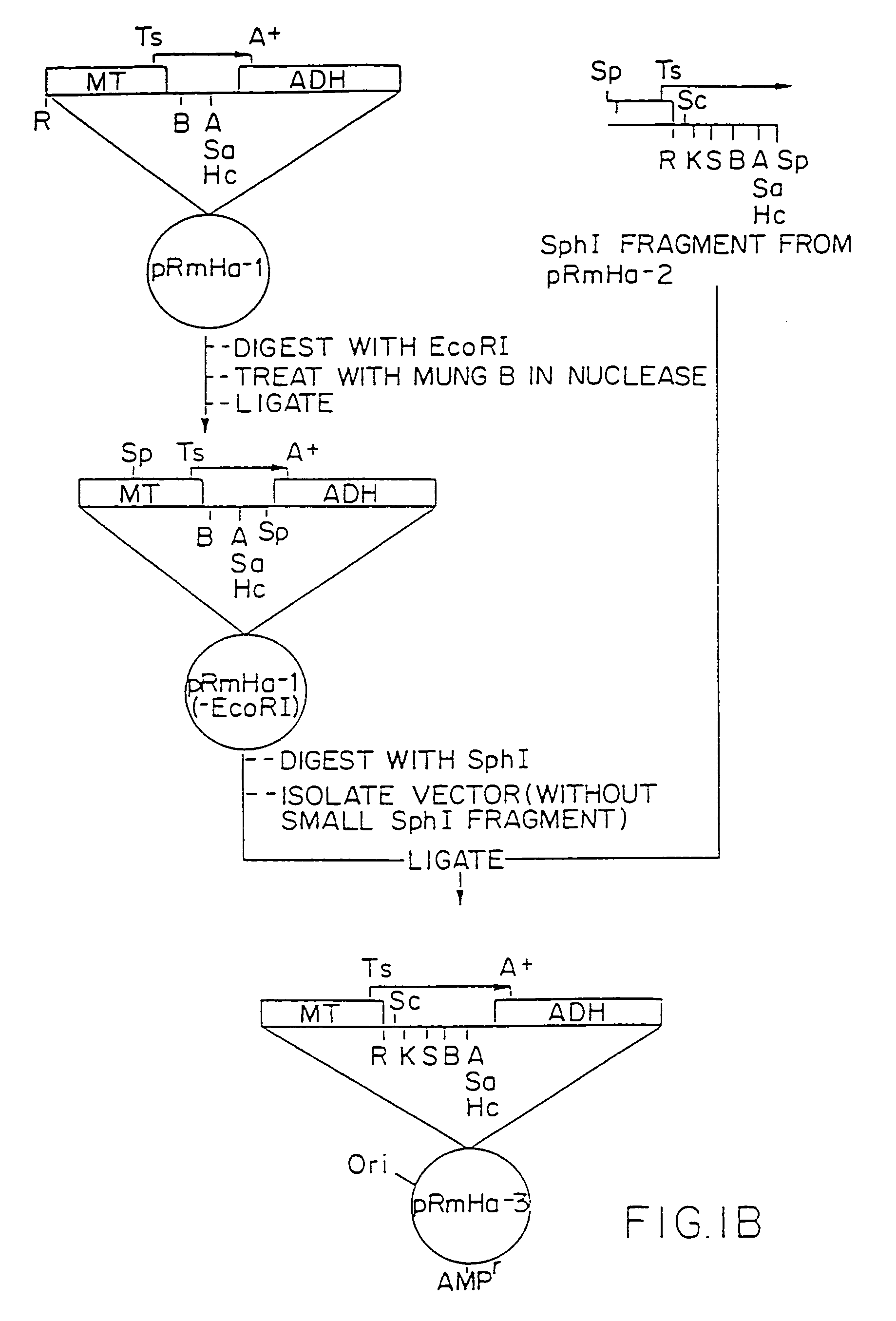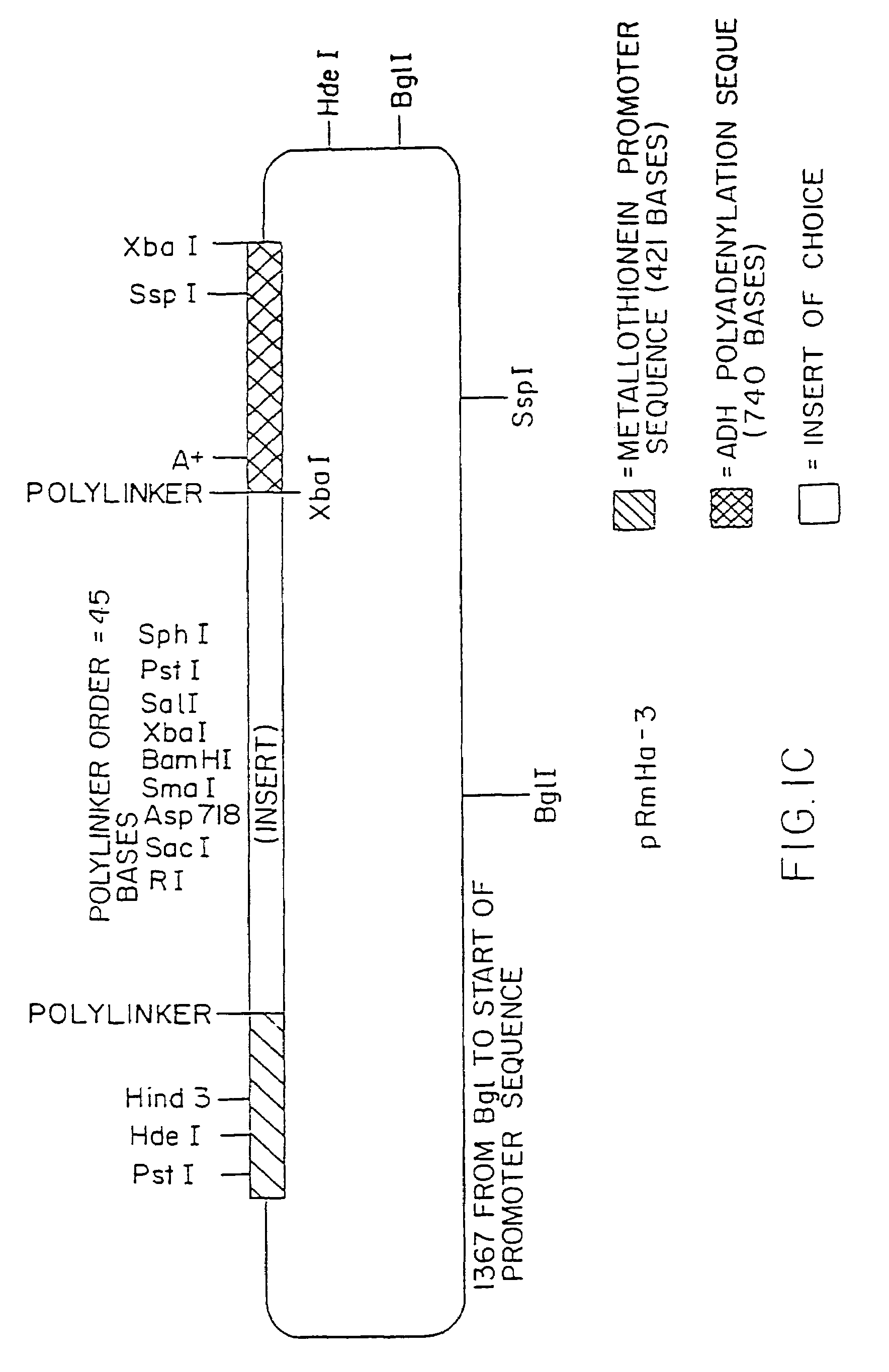MHC class II antigen-presenting systems and methods for activating CD4+ T cells
a technology of cd4+ t cells and antigen-presenting systems, which is applied in the field of mhc class ii antigen-presenting systems and methods for activating cd4+ t cells, can solve the problems of th2-associated cytokines such as il-4, which fail to contain infection and ultimately die, and often demonstrate a more restricted pattern of cytokine production
- Summary
- Abstract
- Description
- Claims
- Application Information
AI Technical Summary
Benefits of technology
Problems solved by technology
Method used
Image
Examples
examples
[0192]The following examples are intended to illustrate, but not limit, the present invention.
1. Preparation of pRmHa-3 Expression Vector
[0193]The pRmHa-3 expression vector for use in expressing MHC proteins in Drosophila Schneider 2 (S2) cells as described in this invention was constructed by ligating a Sph I-linearized pRmHa-1 DNA expression vector with a DNA fragment resulting from a Sph I restriction digest of a pRmHa-2 expression vector to form the pRmHa-3 expression vector as described below. The ligating of the linearized pRmHa-1 with the pRmHa-2 fragment in this manner was performed to remove one of two Eco RI restriction endonuclease cloning sites present in pRmHa-1. Thus, the resultant pRmHa-3 expression vector contained only one Eco RI restriction site in the multiple cloning site (polylinker) into which various MHC class II-encoding DNA fragments were inserted as described in the Examples.
[0194]A. Preparation of pRmHa-1 Expression Vector
[0195]The pRmHa-1 expression vecto...
PUM
 Login to View More
Login to View More Abstract
Description
Claims
Application Information
 Login to View More
Login to View More - R&D
- Intellectual Property
- Life Sciences
- Materials
- Tech Scout
- Unparalleled Data Quality
- Higher Quality Content
- 60% Fewer Hallucinations
Browse by: Latest US Patents, China's latest patents, Technical Efficacy Thesaurus, Application Domain, Technology Topic, Popular Technical Reports.
© 2025 PatSnap. All rights reserved.Legal|Privacy policy|Modern Slavery Act Transparency Statement|Sitemap|About US| Contact US: help@patsnap.com



